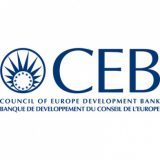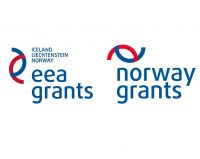National textbooks and curricula are utilized in building a narrative and definition of society, nation, and the creation of a common identity, as well as connecting these ideologies with social/cultural collective values[1]. The teaching of the Roma Holocaust or Samudaripen, as it is known among Roma, is important for reclaiming and restoring the groups shared memory for Romani identity cohesion, cultural preservation, and to ensure the community’s constructive and resilience responses to past and current trauma, violence, and/or discrimination.
On May 16, 1944 in the Blle section of the Auschwitz Birkenau extermination camp called, “Gypsy Camp” more than 6000 Romani prisoners expressed their resistance and protection of humanity. This historical event and collective memory for Roma embodies the resistance of the Romani community as a whole. On May 15, the Roma prisoners were warned that the Nazis where planning their execution. The following day, the Roma prisoners ceased cooperating with the SS. Romani children, men, and women defended themselves from their extermination with warehouse equipment and as a result, on this day no Roma died in the gas chambers. On August 2, 1944 the Nazis gassed the remaining 3000 Romani prisoners in the Blle camp. This historical event and collective memory of the trauma and resilient response embodies the resistance of the Romani community as a whole.
The collective remembrance of the events that transpired on May 16, 1944 in addition to other shared history among Roma is important for building values of social justice and collective action against further community suffering. The teaching of human suffering needs to be done in a way where the individual understands the cause of the trauma through the development and realization of a sense of moral responsibility towards human suffering. In other words, the teaching of human suffering should cause students and the collective society to define their relationship with the suffering of others in a way which facilitates their positionality and connects others suffering with their own. Thus, broadening the societies definition of us and recognizing others suffering as well as a place of responsibility for those inflicting the suffering.
The past three decades have encompassed strengthened efforts to recover the memory of historical trauma against Romani communities. The goal is to empower Roma adults and youth in solidification of their identity across national borders by building shared community experiences of injustices via informal and formal education. Such events have the purpose of rectifying decades of silence and recovering the ability to have agency in historical discourses. Furthermore, their intention is to establish the historical discourse warranting the Roma youth memory through a positive and resilient perspective, as well as connecting past events with current prejudices, social exclusion, and stereotypes[2]. In this process, Roma youth establish their agency and initiate collective action in fighting for contemporary Roma rights.
The resistant responses after the Holocaust resulted in a national, European, and international heightened understanding of humanity and morality, as well as the need to protect this humanity and morality within our societies. Recognition, commemoration, and redress efforts, as well as their symbolic constructions and framing restored and solidified the memory of the Holocaust[3]. Through building a memory of WWII and the Holocaust within the frameworks of humanity and morality the western world constructed and embraced a collective value of justice[4]. However, during the process of historical documentation, memory restoration, recognition, and redress Roma trauma, suffering, and humanity were not included to be a result of the crimes against humanity during WWII. The missing information and education pathways to intergenerational memory and resilient responses within the Roma community and shared among non-Roma, hindered Roma which are perceived in European and international values of humanity, human rights, and discrimination.
After World War II, Roma did not have a voice or social, legal, or political environment to claim themselves as victims of Nazi “crimes against humanity”, let alone obtain any redress or even create their own public facing narrative. It wasn’t until March 17th, 1982 that the German Federal Chancellor recognized the national socialist crimes against the Sinti and Roma as genocide based on race[5]. Transforming the individual trauma Roma communities experienced during the Samudaripen, into a sustained memory that translates into resiliency to current discrimination, requires the ability to translate the initial historic trauma into cultural actions such as art, speeches, plays, movies, rituals, and other commensurations. The first Romani Congress unified the Roma identity through common cultural markers, as well as through the shared history of social injustice during the Samudaripen. Although the actions and recognition were limited in standardization and reach across the Romani community and the wider society[6]. It wasn’t until the past two decades where the Romani community and societies have gained national, European, or international recognition and unified the methods of commemoration, such as Romani Resistance Day or Romani Holocaust Remembrance Day. The delay in using these methods of protecting or restoring the memory of the Samudaripen is mainly due to the level of governmental denial of Roma trauma, political and economic environments, and the social positioning of the Roma community.
To restore the lost generations’ memory, and to be able to use this memory for resilient responses such as building a shared value of humanity which comprises the Roma community , the masses need to be reached through formal education such as national curriculum and textbooks. The past few decades of courses, conferences, speeches, and other actions of informal education and memorization reach few Roma and their communities[7]. It is only those Roma communities (and their contacts) whom carry the process of restoring and framing the memory of the Samudaripen that adequately capture the memory and opportunity for responses which foster resistance and resilience to current discrimination.
Adequate and purposeful representation within national curricula and textbooks about the Samudaripen provides an opportunity to contemplate and establish values of social justice, anti-discrimination, respect, equality, and the responsibility of citizens to protect and reproduce these values throughout their community. For Roma, the recognition and process of recovering the collective memory of shared historical injustices encourages Roma youth to be proud of their identity and captures their power to be agents of change[8]. For the non-Roma student, the education can instill these values as well, although what is important is these values are through the education of the Samudaripen, connecting the values of social justice and human rights with contemporary discrimination. Therefore, building a citizenship which protects the human rights of all groups and especially challenging the persistent, as well as structural and institutional discrimination of their fellow Romani humans.
What is important in textbook and classroom representation of Roma is to present the history and memory in a way which connects the non-Roma’s own humanity to the humanity of Roma. Thus, the representation cannot be in the form of simple statistics or stating that Roma were victims of the Holocaust in passing. Personalization within the process of historical education needs to be present in order to allow the identification and cause of traumatic events which instill a sense of moral and social collective responsibility and solidarity with the Roma community. The connection of an individual’s own humanity with that of the Romani experiences of crimes against humanity ensures that Roma and other groups who have faced historical or current discrimination and violence are not left to suffer alone.
The Romani community resistance and memorialization of the collective trauma stemmed from the community and individual resilience towards Samudaripen and contemporary discrimination. The recent efforts to restore the collective memory and fight current forms of anti-Roma expressions are a display of the community resistance. If this strength and values of justice are distributed to the mass of Roma and Non-Roma we can foster a collective resistance within societies that embody justice, anti-discrimination, anti-violence against Roma, and ultimately the protection and respect for humanity.
This article was authored by REF Research Officer, Marko Pecak (mpecak@romaeducationfund.org)
—————————————————————————————————————————–
[1] Abdou, E. D. (2018). Copts in Egyptian history textbooks: towards an integrated framework for analyzing minority representations. Journal of Curriculum Studies, 50(4), 476-507.
[2] Mirga-Kruszelnicka, A., Acuña, E., & Trojański, P. (2015). EDUCATION FOR REMEMBRANCE OF THE ROMA GENOCIDE.
[3] Alexander, J. C. (2013). Trauma: A social theory. John Wiley & Sons.
[4] Alexander, J. C. (2013). Trauma: A social theory. John Wiley & Sons.
[5] Transgenerational Transfer of War Trauma within the Roma and Sinti Community: Zoni Weisz
[6] Hancock, I. (1991). The East European Roots of Romani Nationalism. Nationalities Papers, 19(3), 251-268.
[7] Kapralski, S. (2007). The Holocaust in the Memory of the Roma. From Trauma to Imagined Community? (pp. 114-123). Newcastle: Cambridge Publishers.
[8] Mirga-Kruszelnicka, A., Acuña, E., & Trojański, P. (2015). EDUCATION FOR REMEMBRANCE OF THE ROMA GENOCIDE.

















